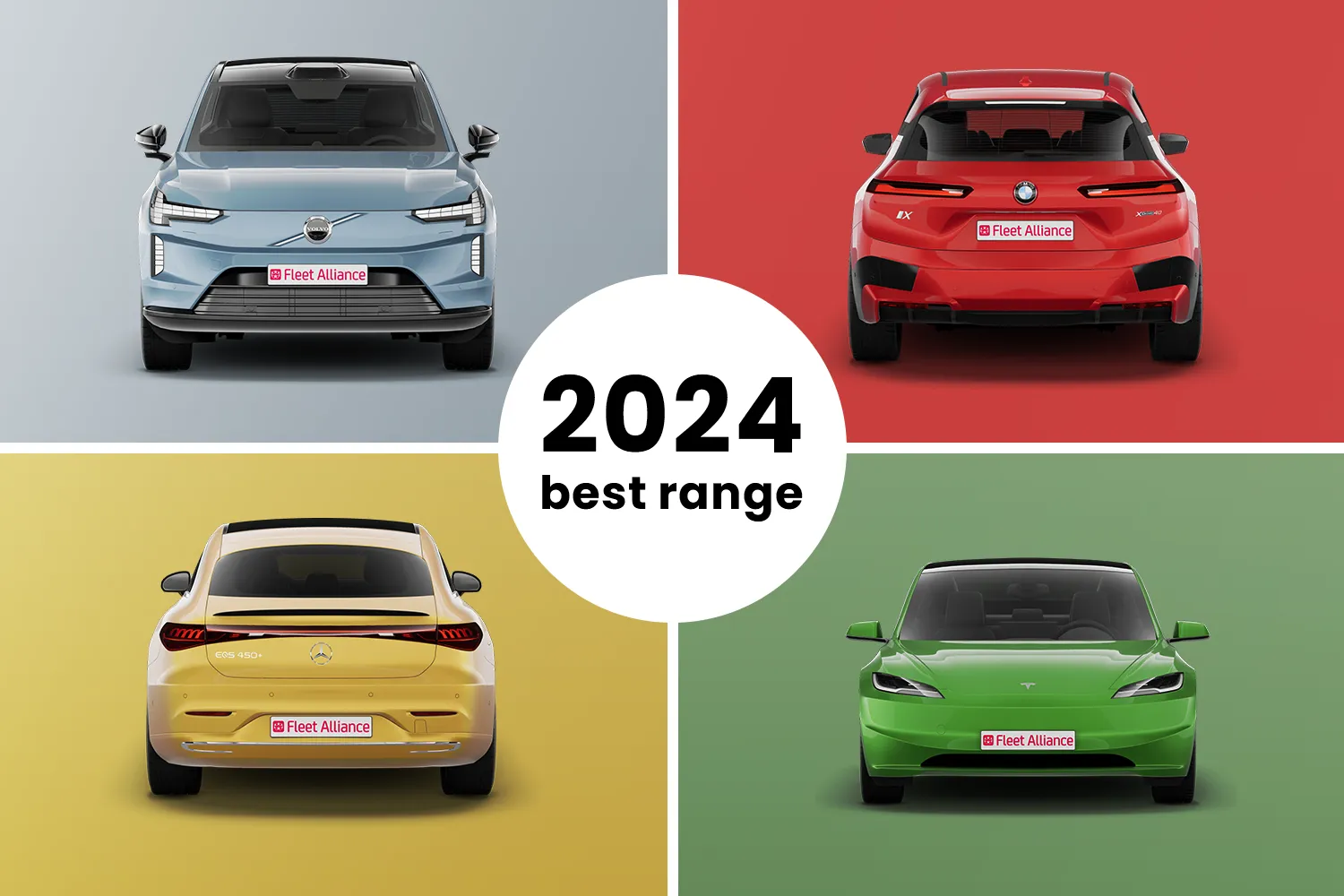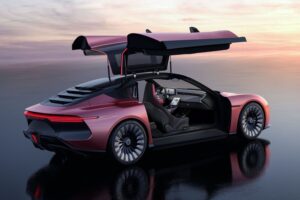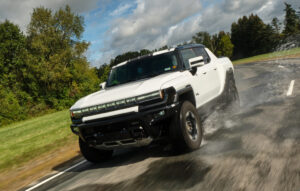Table of Contents

Key Takeaways
-
The range of an electric car at 70 mph varies depending on several factors including vehicle efficiency, battery capacity, and driving conditions.
-
Driving at a constant speed of 70 mph typically decreases an electric car’s range compared to mixed driving conditions.
-
Some electric vehicles perform better than others at highway speeds; the Tesla Model 3 and Hyundai Ioniq Electric are known for their efficiency.
-
Drivers can maximize range at 70 mph by adopting efficient driving habits, maintaining their vehicle, and managing the battery effectively.
-
Understanding EPA ratings and how they translate to real-world conditions can help drivers better estimate their car’s range at highway speeds.
How Far Can an Electric Car Go at 70 mph?
When you’re cruising down the highway at 70 mph, you might wonder just how long your electric car can keep going before you need to stop for a charge. The answer isn’t as straightforward as you might think. While electric cars are known for their efficiency, high-speed driving tends to reduce their range. But don’t worry, I’ll walk you through the factors that impact your EV’s range and how you can make the most of it.
Range Factors Influenced by Speed
Speed is a big deal for electric cars. When you’re driving at 70 mph, your EV works harder to overcome air resistance, which eats up more battery power. Imagine running against a strong wind – it takes more effort, right? It’s the same with your car. But speed isn’t the only thing that affects your range; weather, terrain, and even how much stuff you’ve got in the trunk also play a part.
Most importantly, the battery capacity of your EV dictates how far you can go. Bigger batteries can store more energy, which means more miles on the road. But bigger isn’t always better – larger batteries are heavier and can make the car less efficient overall. It’s all about finding the right balance.
Therefore, to get a realistic idea of how far you can go at 70 mph, you need to consider all these factors together. It’s like putting together a puzzle – each piece is important.
Top Electric Cars Performance at 70 mph
Let’s talk about some champs of the highway. The Tesla Model 3, for instance, is known for its impressive range. At 70 mph, it can still travel a considerable distance before needing a recharge. Then there’s the Hyundai Ioniq Electric, which is super efficient and holds its own at higher speeds. Here’s a quick look at how some top electric cars stack up:
|
Estimated Range at 70 mph |
EPA Range Rating |
|
|---|---|---|
|
Tesla Model 3 |
Approx. 260 miles |
353 miles |
|
Hyundai Ioniq Electric |
Approx. 170 miles |
170 miles |
|
Chevrolet Bolt EV |
Approx. 220 miles |
259 miles |
These numbers give you a ballpark, but remember, your mileage may vary. It’s always best to have a buffer and not push your EV to the last mile, especially on long trips.
Maximizing Your Electric Car’s Range at Highway Speeds
So, you want to squeeze every possible mile out of your electric car at 70 mph? I’ve got you covered. Here’s what you can do:
-
Drive smoothly. Sudden acceleration and braking can guzzle up battery power. Keep it steady and gentle.
-
Use regenerative braking. This feature turns your car’s kinetic energy back into electricity, giving your battery a little boost.
-
Keep an eye on your speed. Yes, we’re talking about 70 mph, but if you can go a bit slower without causing a traffic jam, you’ll save energy.
-
Check your tire pressure regularly. Properly inflated tires reduce rolling resistance and improve efficiency.
-
Travel light. Extra weight means extra work for your EV, so only pack what you need.
By following these tips, you’ll not only extend your range but also save on wear and tear for your vehicle.
Optimal Driving Practices for Efficiency
Driving an electric car efficiently is an art. To master it, you need to understand how your driving habits affect your car’s energy consumption. For instance, using your car’s eco mode can optimize energy usage and extend your range. It’s like putting your car on a diet – it’ll go further on less energy.
Besides that, planning your trips can make a big difference. If you know you’ll be hitting the highway, charge up fully beforehand. And if you can, try to drive during off-peak hours when you can maintain a consistent speed without stopping and starting in traffic.
Vehicle Maintenance Tips
Just like any car, an electric vehicle needs regular check-ups to stay in top shape. Keeping your EV well-maintained means it’ll run more efficiently and your range won’t suffer. Here’s what to keep an eye on:
-
Keep your battery healthy by avoiding extreme temperatures and charging habits that stress the battery.
-
Regularly service your EV according to the manufacturer’s schedule to ensure everything’s running smoothly.
-
Pay attention to software updates from your car manufacturer. These can sometimes improve your car’s efficiency and range.
Remember, a well-maintained car is a happy car, and a happy car takes you further.
Battery Management Best Practices
Managing your electric car’s battery is key to maintaining its range, especially at 70 mph. Think of your battery like your own energy levels. Just as you wouldn’t run a marathon without proper training and nutrition, you shouldn’t expect your EV to perform at its best without the right care. Here are some best practices:
First, avoid letting your battery drain completely. It’s like going without food all day – not good for you and not good for the battery. Try to keep the charge between 20% and 80% to extend its life. Also, when you’re charging, do it slowly if time allows. Fast charging is convenient but can wear out your battery faster, just like eating too much sugar can give you a rush but isn’t great for your health in the long run.
Lastly, consider the temperature. Your EV’s battery doesn’t like extreme heat or cold. If you can, park in the shade or a garage to keep it cool in summer and plug it in during winter to keep it warm. It’s like putting on a jacket in cold weather – it helps your battery retain energy.

Comparing Electric Vehicle Ranges
When it comes to comparing electric vehicle ranges, it’s not just about the numbers. It’s about understanding what those numbers mean for you in the real world. For example, one EV might have a higher EPA range rating but performs differently at 70 mph compared to another car with a lower rating.
Because of this, it’s essential to look at both the EPA range and real-world tests, like those done at a constant 70 mph. These tests can give you a more accurate picture of what to expect on the highway. Think of it like checking the weather before you go out – it helps you plan better.
Understanding EPA Ratings vs. Real-World Conditions
EPA ratings are a good starting point, but they don’t always tell the whole story. They’re conducted under controlled conditions that don’t always match up with the real world – like a lab experiment versus a field test. Real-world conditions include factors like wind, hills, your driving style, and even the use of air conditioning or heating, which can all impact your range.
Therefore, when you’re looking at an EV’s range, take the EPA rating with a grain of salt. Use it as a guideline, but also seek out real-world range tests and owner experiences to get the full picture. It’s like looking at reviews before you buy something – you get to see how it performs in real life, not just what the manufacturer says.
Electric Cars with the Best Highway Range
For example, the Tesla Model S Long Range is known for its impressive highway range, often exceeding its EPA rating in real-world conditions. Meanwhile, the Lucid Air has made headlines with its groundbreaking range capabilities, promising to be a game-changer in the EV market.
But it’s not all about the luxury segment. More affordable options like the Chevrolet Bolt and the Hyundai Kona Electric also offer great range, making them practical choices for everyday use. It’s like finding a great pair of shoes that are not only stylish but also comfortable and durable.
When choosing an electric car, consider how you’ll be using it. If you’re regularly on the highway at 70 mph, look for models that excel in range tests at that speed. It’s like picking the right tool for the job – it makes everything easier.

Preparing for Long-Distance Journeys in an EV
Planning a road trip in your electric car? Great choice! You’ll enjoy a quiet ride and no gas station stops. But long-distance travel at 70 mph requires a bit of preparation. It’s like going camping – the more prepared you are, the more fun you’ll have.
Planning Your Route with Charging Stations in Mind
Before you hit the road, plan your route around charging stations. Apps like PlugShare or your car’s navigation system can help you find places to charge along the way. Think of it as plotting treasure maps where the treasure is electricity. It’s a good idea to have backup options in case your first choice is busy or out of order.
Also, consider the type of charger. Not all chargers are created equal. Some can fill your battery much faster than others. It’s like filling up a water bottle – a bigger faucet fills it up quicker. Look for DC fast chargers along your route for a speedy top-up.
Packing and Load Considerations
When you’re packing for your trip, remember that weight affects your EV’s range. The heavier the load, the more energy your car needs to move. It’s like carrying a heavy backpack – it’s going to slow you down. Pack only what you need and distribute the weight evenly in your car to keep it balanced and efficient.
And don’t forget about aerodynamics. If you’re strapping luggage to the roof, it can create drag and reduce your range. It’s like running with a parachute – it’s going to be a lot harder to move forward. If possible, pack everything inside the car or use an aerodynamic cargo box on the roof.
By planning your route, managing your load, and driving efficiently, you’ll maximize your electric car’s range and enjoy a smooth, worry-free journey. It’s all about being smart and prepared – then you can sit back, relax, and enjoy the ride.
Tackling the Climate Impact on EV Range at 70 mph
Driving an electric vehicle (EV) at 70 mph in different climates can be like wearing the same outfit year-round; it might work, but it’s not optimal. Just as you switch up your wardrobe for the weather, you need to adjust your expectations and strategies for your EV’s range as seasons change.
Summer’s heat can be tough on your EV’s battery life, just like winter’s chill can put a strain on its energy reserves. These seasonal shifts can influence how far you can drive at 70 mph on a single charge. Understanding this can help you plan better and avoid range anxiety.
Moreover, extreme temperatures can force your EV to work harder to maintain the battery’s optimal temperature, using up precious energy that could’ve been used for driving. It’s a bit like your body sweating or shivering to keep you cool or warm – it’s necessary, but it uses up energy.
Seasonal Variations and Battery Performance
Seasonal changes can significantly impact your EV’s battery performance. In the winter, batteries can lose a portion of their effective range because cold temperatures slow down the chemical reactions within the battery cells. It’s like trying to jog in the snow; you just can’t go as fast or as far. Conversely, in the summer, high temperatures can lead to faster battery degradation over time, which can reduce the overall range of your EV, similar to how running in extreme heat can wear you out quicker. For more details on maintaining optimal performance, check out this guide on electric car maintenance costs.
Temperature Management Strategies for Extended Range
To combat the effects of climate on your EV’s range, consider temperature management strategies. Preconditioning your car while it’s still plugged in can bring the battery to an ideal temperature before you start driving. It’s like preheating your oven – it ensures everything runs smoothly right from the start. Also, try to park in the shade or a garage to protect your EV from extreme temperatures, just as you’d seek shade on a hot day.

Frequently Asked Questions
You’ve got questions, and I’ve got answers. Let’s dive into some common queries about electric car range at 70 mph.
What is the average range drop at 70 mph compared to city driving?
At 70 mph, you can expect your electric car’s range to drop by about 15-30% compared to city driving. This is because highway driving demands more power to overcome air resistance. It’s like the difference between walking through a hallway and walking against a strong wind. However, the exact range drop will vary based on the model of your EV, driving conditions, and how you handle your vehicle.
How does the topography affect electric car range at highway speeds?
Topography plays a crucial role in your EV’s range. Climbing hills at 70 mph can drain your battery faster than driving on flat terrain, much like how you get tired quicker hiking uphill than strolling on a level path. Conversely, descending gives you a chance to regain some energy through regenerative braking, like how you might catch your breath walking downhill.
Therefore, if your route includes mountainous areas or steep inclines, plan for more frequent charging stops. And when you’re going downhill, take advantage of regenerative braking to help recharge your battery – it’s like getting a little push on the back as you go.
Can I improve my EV’s range at 70 mph by changing driving modes?
Yes, most electric cars come with different driving modes that can help improve your range, even at 70 mph. Eco modes, for instance, can optimize your car’s energy consumption by limiting power output and adjusting climate control settings. It’s like choosing a more fuel-efficient route for a trip.
Additionally, some EVs have a ‘B’ mode or similar settings that increase regenerative braking, capturing more energy when you slow down or go downhill. It’s akin to putting money into a savings account every time you get some spare change.
Experiment with these modes to find the best balance of performance and efficiency for your driving style and conditions. And remember, the most efficient car is the one driven by an informed and mindful driver – that’s you.




